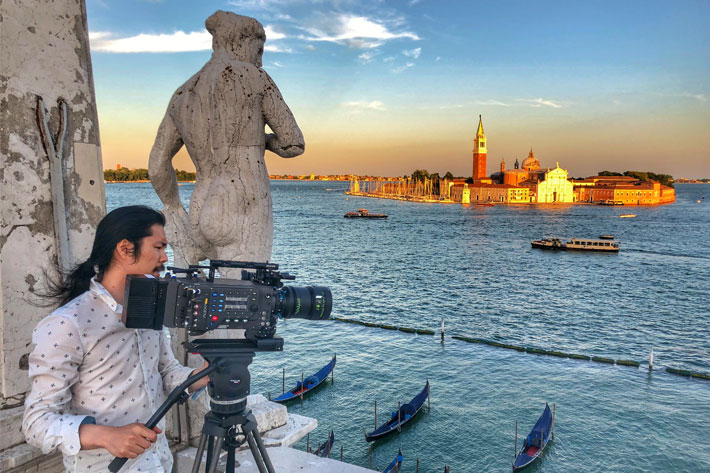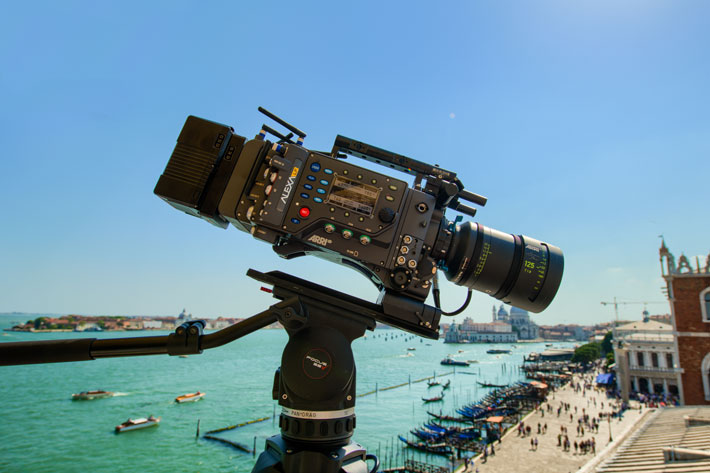
The “Surreal Beauty” of Venice is a documentary style for a TV series and potentially IMAX film, a challenge that cinematographer Peter Chang accepts with a smile. He just loves to break the rules!
Peter Chang is known for his work for the IMAX giant-screen, on documentaries as Jerusalem (2013) and America Wild: National Parks Adventure (2016). He recently completed his latest film, Cuba, which won the Best Documentary award at the 34th Annual Fort Lauderdale International Film Festival where it received great reviews, including from members of the large Cuban American population of south Florida.
The film is primarily available with a 44-minute run time, but a 20-minute version has been made available for a select number of venues. Cuba has begun releasing to museums, educational institutions and other giant screen and IMAX venues. Watch the YouTube clip and you’ll want to to go and see the whole film.
https://youtu.be/5ijvjeZ89qY
Filmed exclusively for the giant screen format Peter Cheng loves so much, Cuba tells the powerful story of a land preserved in time yet poised on the cusp of dramatic change. The nation’s vibrant culture, meticulously maintained colonial architecture, and pristine ecosystems provide a vivid window into the island’s history and spirit. To capture the spirit of the place, Peter Chang broke with tradition and used Cooke S7/I full frame prime lenses, adding close-ups for the portrait-oriented sections of award-winning IMAX and giant-screen presentation. He had used the lenses previously, in another project, and was eager to explore further.

Breaking the rules of IMAX with Cooke lenses
“Cuba is focused on the beauty, spirit and character of this Caribbean country and its people,” said Chang. “One of the primary stories in the film centers around a young ballerina. I was really looking forward to using the Cookes as we knew we would be shooting on stage with challenging theatrical stage lighting, and breaking that sort of giant screen IMAX norm of not having any close-ups. That’s exactly what we did — shot some close-ups of her face, which came out beautifully.”
“IMAX has flat screens that are typically used for 3D, and you also have dome theatres where you’re looking at the bottom half of a 1.43 image and then the rest of it is over your head and you’re not typically looking at that,” explained Chang. “A close-up has to be framed in that bottom half or third of the image. With an image as big as we’re projecting – at times, 90 feet x 65 feet or more – a close-up can be rather jarring because you can see a lot of the imperfections on people’s faces, you can see the makeup on their skin and blemishes that can be unattractive, but I wanted to see how far we could push it with our ballerina to gain more intimacy.”
Shooting for TV and IMAX
The experience was important, because it shows how the cinematographer Peter Chang likes to break the rules. In fact, he is doing it again, also with Cooke S7s in his toolkit. This time at another location, where this past Summer, the award-winning cinematographer and documentary film director embarked on an assignment any visual artist would dream of – capturing the beauty of one of the most beautiful cities in the world – Venice, Italy on the northern shore of the Adriatic Sea.
https://youtu.be/yKx-Kkw_fRI
“We are shooting for a documentary TV series and potentially an IMAX film, but both are still works in progress and under wraps so I can’t talk about them in too much detail yet,” says Chang.
What he can talk about is the challenge of capturing the architecture, canals, and the people who live and work in Venice in a way that serves the panoramic demands of IMAX and the more intimate images seen at home or on a mobile device. “We have to frame for multiple formats. IMAX is weighted to wider angle shots, whereas something for television is going to have a lot more close-ups,” says Chang. “Finding that balance is a challenge.”
A tripod for small studio setups
It all sounds much like the balance struck when filming Cuba. To meet that challenge, Chang brought in the finest tools of his trade – large format cameras like the Alexa LF, the Sony Venice system, and the Red Monstro. Lenses included ARRI’s Signature Primes and Cooke S7s. “I wanted a certain creaminess to the lens to add to the surreal nature of Venice,” says Chang. The director shot the video “Venice in Venice” used to promote the Sony Venice system in 2018.
For camera support, Chang brought along a Ronin II and a Cartoni Focus 22 tripod system, one of the most versatile supports in the Cartoni range. It supports payloads up to 49 lbs making it an excellent choice for cinematographers or small studio setups. And for Chang, the Cartoni performed great, and opened the door for some different ways of work.
https://youtu.be/0EWyDHgcpTI
“There’s a lot to love about the tripod,” said Chang. “The head performance on the Focus 22 is very smooth and stable no matter what the payload was and we had some pretty heavy loads. The Cartoni is designed and fabricated very well with a broad range in terms of pan and tilts. I was introduced to Cartoni tripods by my producing partner Steve Gibby, who is a highly experienced cinematographer and a longtime user of Cartoni tripod systems.”
Using a Cartoni to support a Ronin
“Shooting in Venice means you are going to be very near the water, sometimes in boats, and there are plenty of instances when using a tripod made a lot of sense such as shooting indoors including portraits, statues and other works of art or even just static, framed shots.”
Chang says the advent of stabilizers and gimbals such as a Ronin II have only added to a tripod’s effectiveness. “Sometimes we would use the Ronin as a remote head by putting that on top of the Cartoni. There are different ways to use it that aren’t necessarily traditional but that are versatile and work in combination with other tools,” says Chang.
“It was refreshing to use a tripod on this shoot,” says Peter Chang, whose recent IMAX offering, the documentary on Cuba, relied heavily on movement. It’s as if he is rewriting all the rules applied to shooting for IMAX. The results, as seen in Cuba and the footage available from Venice suggest he is creating some new visuals from places that have been filmed over and over. It may have to do, too, with the way he approaches his subjects.
Chang describes his shooting style as story-driven and informed by an education at the Pacific Film Archive in Berkeley, California and a stint at the campus newspaper where the director worked as a photographer. “That’s where I developed my love for the image,” says Chang. “I was able to take advantage of the convergence between DSLR stills and video, and you know the Canon 5D Mark II was a major shift to being able to shoot high-quality video on the same camera used for still photography.”
He says tripods are handy to put on dollies or to get the shot low to the ground. “I am glad I had the tripod because Steadicams and gimbals have taken off to where there is a temptation to leave the tripod behind in the truck, or in Venice, the boat. ” One beneficial aspect of the Cartoni says Peter Chang is that it isn’t bulky or heavy. “But having it with you – having it in your tool bag – it’s just a versatile option to have.”
Chang’s career path didn’t go down the more conventional route through film school. He studied English Literature and Creative Writing in college. His advice for aspiring filmmakers is to “develop and explore your curiosity for subjects and places and stories” and then figure out how to approach that in terms of your craft. “The craft is something that is easy to learn and you can always find people that are skilled to support you,” says Chang. “The hardest thing is to find a story to tell and how to tell it.”
Peter Chang has shown he is more than up to the challenge of capturing the surreal beauty of Venice, even as the city is besieged by record flooding. Chang’s interpretation of Venice and its “surreal beauty” may be his most brilliant work yet.

